
When the defending Stanley Cup champion Canadiens took to the ice for the 1924-25 season, both the NHL and the Montreal hockey landscape had a very different look.
To suggest the business of hockey was booming would be an understatement, and the changes in the NHL perfectly reflected the growth of the game.
Since the NHL began eight seasons earlier in 1917-18, it had existed as a four team league that had struggled financially to get through the first World War unscathed. With strong teams in four cities now existing on financially solid ground, the NHL decided it was time to spread itself out.

There would be two new NHL franchises added this season, including a renewed Montreal rivalry, a new building, a longer schedule, and a long standing league doormat - the Hamilton Tigers - rejuvenated into a first place team.
THE FORUM OPENS
A new arena was contructed in Montreal, the Forum, and it was built to house the new Montreal team, and instant Canadiens rivals, the Maroons. In an odd and foreshadowing twist of fate, it would the Canadiens who played first in the Forum.
 Sir Edward Beattie, president of the Canadian Pacific railway is cited as first having the idea to build the Forum in 1923, long before the Maroons were envisioned as possible tenants. A need for a new arena in the city of Montreal was created in the absence of the Jubilee and Westmount Arena fires in recent years.
Sir Edward Beattie, president of the Canadian Pacific railway is cited as first having the idea to build the Forum in 1923, long before the Maroons were envisioned as possible tenants. A need for a new arena in the city of Montreal was created in the absence of the Jubilee and Westmount Arena fires in recent years.William Northy, owner of the 4,300 seat Westmount that burned to the ground in 1918, and a builder with the Canadian Arena Company, was himself looking to build a new arena in the city. After the CAC successfully built the Arena Gardens in Toronto, Northey and Liberal Senator Donat Raymond began to develop plans for 12,500 seat capacity rink for the city of Montreal.

Plans were scaled back due to financing questions during the Depression and a 9,300 seater was designed. After more money trouble, a backer by the name of H.L. Timmins financed the final project.
The historically significant site at the northeast corner of Atwater and St. Catherine St. West was chosen as the location as it had been home to an outdoor rink earlier in the 1900's, where future hockey legends Frank and Lester Patrick, and Art Ross learned their craft.

At the time contruction began, the building on site was a roller skating rink named the Forum. Northey decided to keep the name.
At a cost of $1.5 million, contruction of the Forum began in the summer of 1924, and was finished in an incredible 159 days. The building would see two major upgrades in it's lifetime, one in the early 1950's and a second in 1968.
The Forum hosted it's first hockey game on November 29, 1924, and surprisingly, the Maroons were not the home team. Against the wails of both Forum and Maroons management, the Canadiens season opening contest against the Toronto St. Patricks was moved to the new building by the NHL - once again because the Mount Royal Arena couldn't produce ice on a natural surface so early in the season.
The Canadiens went on to beat the St. Patricks 7–1 in the opener, with Billy Boucher scoring a hat trick.
BRUINS BECOME FIRST U.S. BASED NHL TEAM
The NHL's other new franchise, the Boston Bruins, was the first granted outside of Canada.
In 1923, First National Stores grocery tycoon Charles Adams fell in love with the game of hockey, after wirnessing the Stanley Cup playoffs. He persisted in convincing NHL governors to grant him the first U.S. based franchise and the league decided it was time to explore American hockey markets.

Adams sought out the Ottawa Senators Art Ross as his manager, and Ross proceded to put his imprint on the club. Ross, on Adams advice, was directed to choose a nickname that portrayed an untamed animal displaying speed, agility, and cunning. The Bruins moniker he choose fit perfectly in line with colours of Adams chain of stores. Ross would remain on the Bruins front near 30 years, in every capacity from player to manager to four separate coaching stints.
 More American franchises would in the Bruins wake, but few would have the rivalry with the Canadiens that the Bruins would enjoy, or regret, in years to come.
More American franchises would in the Bruins wake, but few would have the rivalry with the Canadiens that the Bruins would enjoy, or regret, in years to come.In this eighth season of NHL hockey, the league decided it would begin it's schedule earlier and expand it from 24 to 30 games. The additional games were gravy for the owners, but not all the players were as enthused.
TIGERS FINALLY SPROUT CLAWS
The improvement of the Hamilton Tigers can be traced to the previous season when owner Percy Thompson signed the Green brothers, Red and Shorty, from the Sudbury Wolves of the NOHA in November 1923. The brothers were placed on a line with emerging star Billy Burch.
 Two other Wolves players, Alex McKinnon and Charlie Langlois were also added, and the players acquired from the Canadiens in the Joe Malone trade, Bert Corbeau and Edmond Bouchard, helped sturdy the team considerably. The final piece was the hiring of former Montreal Wanderers guru Jimmy Gardner as coach. The former NHA and NHL star transformed the once hapless Tigers into winners almost immediately.
Two other Wolves players, Alex McKinnon and Charlie Langlois were also added, and the players acquired from the Canadiens in the Joe Malone trade, Bert Corbeau and Edmond Bouchard, helped sturdy the team considerably. The final piece was the hiring of former Montreal Wanderers guru Jimmy Gardner as coach. The former NHA and NHL star transformed the once hapless Tigers into winners almost immediately.CANADIENS SET TO DEFEND THEIR TITLE
Still recognizable within all this, were a very strong Canadiens squad that would have it's best regular season ever.
While the Canadiens altered the look of their red, white, and blue sweaters with a globe logo befitting their World Champion status, the men who wore them were for the most part an unchanged core group.
Back were Georges Vezina, the Cleghorn brothers, Sprague and Odie, their three young offensive stars - Morenz, Joliat, and Boucher, solid defenseman Sylvio Mantha and Billy Coutu, as well as coach Leo Dandurand. Not returning this season were Bill Cameron, who would be back in the NHL in two seasons time, and Bobby Boucher, who went on toplay with the Vancouver Maroons. Billy Bell and Joe Malone both retired from hockey.

Despite having shared in the success in Montreal, only 61 days after his arrival, Boucher was traded to the WCHL Maroons on the very day the Habs were celebrating their Stanley Cup win. Team owner Leo Dandurand felt Bobby was too small a player, and traded him for prospect Charlie Cotch, who never appeared with the team.
The new faces on the Canadiens were mainly spares, part timers, and late season aquisitions and they included John Matz, a 33 year old center who had last played with the Saskatoon Crescents, and Fern Headley, a 23 year old defenseman who was on loan from the Bruins 13 games into the season. Dave Ritchie, who was previously acquired from Hamilton during the 1920-21 season, appeared in five games with the Canadiens after being signed as a free agent on January 28.
THE OTTAWA THREE COME AND GO
On November 17, three Ottawa area players from the OCHL were signed as free agents to brief tryout contracts, and they were Roland Lafleur and goaltender Eugene Decosse of the Ottawa Royal Canadians, and René Joliat, Aurel's brother, from the Ottawa New Edinburghs.
 It is unclear exactly why Decosse and the relatively average fellow Ottawa players René Joliat and Roland Lafleur all got a chance with the Habs at the same time. The "Ottawa Three", as they were known at the time, all dressed for the team to open the season against the St. Patricks on November 29. Only Decosse did not play, as Vezina was in fine form, and backstopped the Habs to an easy 7-1 victory.
It is unclear exactly why Decosse and the relatively average fellow Ottawa players René Joliat and Roland Lafleur all got a chance with the Habs at the same time. The "Ottawa Three", as they were known at the time, all dressed for the team to open the season against the St. Patricks on November 29. Only Decosse did not play, as Vezina was in fine form, and backstopped the Habs to an easy 7-1 victory. The very next day, the french language Ottawa newspaper Le Droit painted Decosse's return to Ottawa as a good thing, claiming the conditions offered by the Canadiens contract were not worth throwing ones future away. The paper did not elaborate on what those expectations were, but they were presumably equally unacceptable to René Joliat and René Lafleur, who also returned to the Ottawa area following their lone games in the NHL.
 DANDURAND SEES DOLLAR SIGNS
DANDURAND SEES DOLLAR SIGNSCanadiens owner and manager Leo Dandurand, knew a thing or ten about how to make a cash register ring. As a horse racing afficianado and promoter extraorinaire, Dandurand had firm ideas upon his purchase of the Canadiens hockey club three seasons prior, on what endeavors could maximize his investment.
With Montreal being a hotbed of hockey madness, and recalling the interest and dollar generating fury of the Canadiens - Wanderers rivalry of years gone by, Dandurand put up no qualms when it came to sharing the city's territorial rights with a second NHL franchise. In fact, his asking price was so low, the demand almost seemed foolish.
 Dandurand charged a mere $15,000 to allow a rival team to set up shop within the city limits, knowing full well that his bank account would benefit. He would later claim that it was no generous offer on his part to allow a second city team into the picture.
Dandurand charged a mere $15,000 to allow a rival team to set up shop within the city limits, knowing full well that his bank account would benefit. He would later claim that it was no generous offer on his part to allow a second city team into the picture. Once assured by the NHL governors that a second Montreal club would only be allowed to dress english speaking players, the offer took on the form as an investment into what would become a bitterly fought cash generating rivalry.
At the time, many followers of the game where surprised when Dandurand stepped forth to second the motion by Ottawa manager T.P. Gorman that a second NHL franchise be admitted for the city of Montreal.

The Maroons $15,000 fee later became the source of controversy when several NHL factions claimed that the money was destined for league pockets, as was the Bruins fee. Dandurand sternly disagreed, claiming successfully that it had previously been agreed to that the fee was payment for allowing the Maroons onto the Canadiens turf. From this point on, Dandurand made certain the minutes of NHL meetings were written down and signed by all parties.
CECIL HART GETS MAROONED
The Canadiens man for all purposes, Cecil Hart, who had made the winning bid for Dandurand, Cattarinich and Letourneau when they purchased the team from the Kennedy family, and who had signed Howie Morenz one season prior, was tabbed as the man to be in charge of the Maroons. Hart's loyalties are divided when it comes to parting ways with the Canadiens, but he remains on good terms with the Canadiens team.
 The Maroons owners however, fail to relinquish the desired complete control of the team's players to Hart, and disagreements ensue to the point where he is let go by the organization on February 9. Not long after, he is rehired by the Canadiens as a scout once more, and along with Morenz, he would scour the Ontario side of the border for hockey talent.
The Maroons owners however, fail to relinquish the desired complete control of the team's players to Hart, and disagreements ensue to the point where he is let go by the organization on February 9. Not long after, he is rehired by the Canadiens as a scout once more, and along with Morenz, he would scour the Ontario side of the border for hockey talent.The new Forum was also of a concern to the Canadiens, as the home of the Maroons held close to 10,000 seats. The building had owners of the Mount Royal Arena worried about losing the Canadiens as tenants, and they offered Dandurand and company $50,000 to purchase the club. The offer was refused.
The first Canadiens and Maroons contest took place at the Mount Royal on Wednesday, December 10, and was won 5-0 by the Canadiens in front of 5,000 fans. The teams met again 17 days later and played to a 1-1 draw at the Forum before 11,000 spectators. The tie ended a Canadiens six games winning streak and left them with a 7-1-1 record to start the season.
SPRAGUE BEING SPRAGUE
Sprague Cleghorn continued to be a sideshow, much to the detriment of Dandurand. On January 24, Cleghorn kept up his one man war against the Ottawa Senators by getting involved in a fiery battle with the George Boucher. After the Ottawa player levelled a Montreal player into the boards, Cleghorn was helping him up when he was clocked by a Boucher roundhouse. Cleghorn retaliated and pled innocent, but was still suspended along with Boucher for the incidents that followed.
Late in the season, on February 28, the Canadiens were in Ottawa for a game against the Senators, when both players and fans felt what was explained away as an explosion at the time. In Montreal, as the Maroons hosted Hamilton, a similar sensation was felt. What occured, was an earthquake centered in Charlevoix, Quebec near the Saguenay River. It shook all the way to Ottawa, scattering fans temporarily in both buildings. While Billy Boucher and the Senators Ed Gorman were exchanging fists in the penalty box area, scribes in the press box above were gripping their typewriters so that they would not drop onto spectator's heads down below. The quake did not shake the Canadiens, who lost the game 1-0.
BRUTE CLEGHORN INSPIRES THE LADY BYNG
The NHL introduced another new award in 1924-25, the Lady Byng trophy, named in honour of Marie Evelyn Moreton, the wife of the Viscount Byng of Vimy, a Vimy Ridge war hero who was the Governor General of Canada from 1921 to 1926. Lady Byng, who was an avid hockey fan, decided to donate the trophy to the NHL in 1925.
 The Governor General's wife was said to quite appauled by players the likes of Sprague Cleghorn and sought to reward cleaner play with her donation to the game.
The Governor General's wife was said to quite appauled by players the likes of Sprague Cleghorn and sought to reward cleaner play with her donation to the game.Lady Byng decided the trophy's first winner would be the Ottawa Senator's Frank Nighbor. Late in the season she invited Nighbor to Rideau Hall, showed him the trophy, and asked him if the NHL would accept it as an award for its most gentlemanly player. When Nighbor said he thought it would, Lady Byng, much to Nighbor's surprise, awarded him the trophy.
CANADIENS SET TEAM RECORDS
The Canadiens finished the season with a record of 17-11-2 and their 36 points placed them third in the NHL. Hamilton led with 39, followed closely by Toronto with 38.

Joliat, Morenz, and Boucher finished third, fourth, and seventh, respectively in the scoring race. Morenz's 30 goals were bested only by Toronto's Babe Dye with 38.
The Canadiens as a team scored 93 goals, the most in this season, while also allowing the least, with 56 in 30 games. The 38 year old Georges Vezina was again the best goaltender in the league, with a miniscule 1.81 goals against average and 5 shutouts.

In the six contests with the cross town rival Maroons, the Canadiens held a 4-0-2 edge. The NHL's two newest teams, the Maroons and Bruins, finished fifth and sixth in their initial NHL campaings.
 With a 3-2-1 record against the Toronto, the Canadiens were all set for the two game total goals series against the St. Patricks. Implemented under the NHL's new playoff format, the second and third place teams would battle for the right to take on the first place squad for the O'Brien Cup. The winner of that series would then move on to challenge the WCHL champions for the Stanley Cup.
With a 3-2-1 record against the Toronto, the Canadiens were all set for the two game total goals series against the St. Patricks. Implemented under the NHL's new playoff format, the second and third place teams would battle for the right to take on the first place squad for the O'Brien Cup. The winner of that series would then move on to challenge the WCHL champions for the Stanley Cup.TIGERS PLAYERS REVOLT
The Canadiens were about to begin the series when it was learned that the first place Tigers players were revolting against the terms of their contracts. The players demanded to their owner, Percy Thompson, that they would not participate in the NHL finals unless they received an additional $200 each for the extra six games played that year. Under their contracts the Tigers players were to receive the same amount of money no matter how many games they played from December 1, 1924 to March 31, 1925.
Upset at having to play an additional 6 games in the schedule for no extra pay, the Hamilton players went on strike figuring they had NHL President Frank Calder over a barrel.
Calder was furious, stating that the Tigers players would be fined or suspended if they did not play in the final series, but the players stated that they would rather retire than be taken advantage of.
The Canadiens meanwhile, had won the first playoff game on March 11 in Montreal by a score of 3-2. They travelled to Toronto for the second game and learned that a tie game would be all that was needed to achieve the Stanley Cup finals.
 On March 13, the day of the final game of the semi final between Toronto and the Canadiens, the Tigers Red Green met with president Calder and attempted to iron out an agreement to no avail. There was little negotiating, as Green told that the players stood firm.
On March 13, the day of the final game of the semi final between Toronto and the Canadiens, the Tigers Red Green met with president Calder and attempted to iron out an agreement to no avail. There was little negotiating, as Green told that the players stood firm. All Tigers players were then suspended by the NHL and fined $200 each, and their season and playoffs cancelled. Calder declared that the winner of the Canadiens / St. Patricks series would then advance to the Stanley Cup challenge.
That evening the Canadiens shut out the St. Patricks 2-0, and they were off to the Stanley Cup finals for a second season running.
WESTERN HOCKEY MERGED INTO ONE LEAGUE
Western league hockey had undergone its share of changes as well in 1924. Prior to the start of the season, the PCHA folded and two of its best teams, the Vancouver Maroons and the Victoria Cougars, joined the WCHL. This meant that after three seasons of having three leagues compete for the Stanley Cup, the final would once again have only two competing teams.

The Cougars followed much the same path to the final as did Montreal. They were also a third place finisher, and they topled the Calgary Tigers and Newsy Lalonde's Saskatoon Crescents to earn their way into the final.
CANADIENS LEAVE STANLEY BEHIND
The Canadiens were perhaps a little overconfident as the left for Victoria, and purposely did not bring the Stanley Cup with them, assured it would still be theirs upon their return.
The games were played at the Victoria Arena in this best of five series were the first broadcast on radio, and it was Dr. Clem Davies who called the play by play.
The series began on March 21, and the Canadiens dropped game one by a 5-2 score. In a supersticious move prior to the start of the game, the Cougars players hurried to leave the pre-game warmup first for good luck. The trick worked well for them again in game two, as they put the Canadiens in a hole with a 3-1 win.
INNOVATIVE PATRICK DUPES CANADIENS
Montreal, as did most of the NHL teams, still used its six best players for the majority of the game, substituting them as they each tired. Cougars manager Lester Patrick, perhaps hockey's greatest visionary, employed two lines in constant rotation during games. His reasoning was that even fresh second tier players had more to give energy wise over the course of a game that the tired players the opposition would counter with.
For game three, the Canadiens thought they would pull the Cougars trick of leaving the warmup first. It likely had no bearing on the final score, but the stunt seemed to work, as they Canadiens went on to win 4-2.
The Canadiens backs were again against the wall on March 30, and Victoria handed them a firm 6-1 routing. There would be no Stanley Cup in Montreal this season.
Montreal scored eight goals in the series, with all of them coming from their top line of Morenz, Boucher and Joliat. Victoria countered with a more balanced attack with eight different skaters combining for 16 goals. There was something to be learned from Lester Patrick's method.

The next day, on April 1, the mayor of Victoria hosted a banquet for the team without the Stanley Cup being present. It would be mailed by the Canadiens organization to the Cougars upon their return to Montreal.
With a host of changes still to come on the hockey horizon, this series would mark the closing of an era and the dawning of a new one. The Victoria Cougars would become the last non NHL team to win the Stanley Cup.









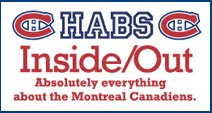





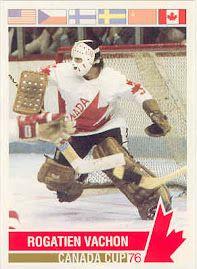
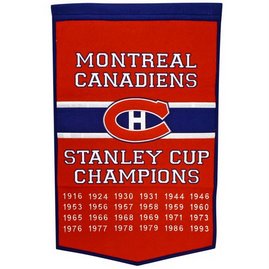







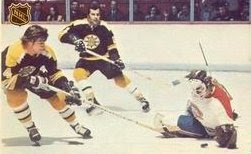



















































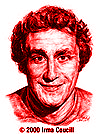



































































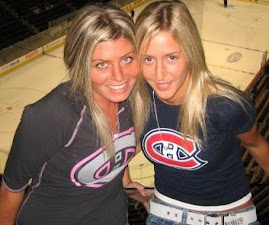


















No comments:
Post a Comment